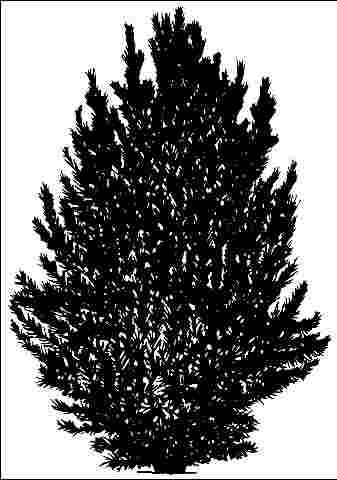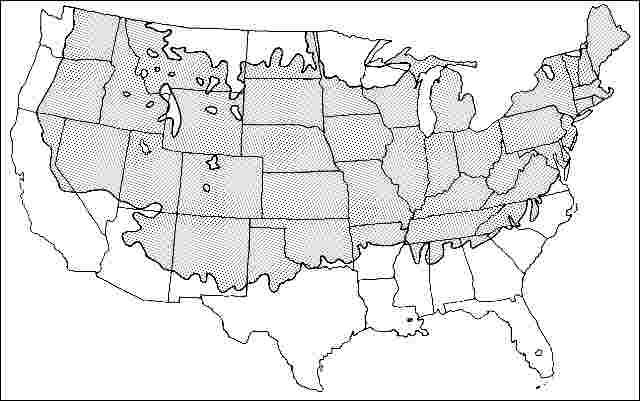Introduction
This North American native tree, 30 to 50 feet high and 15 to 35 feet wide, has a fairly wide, pyramidal silhouette when young but slowly matures into a broad tree with a flattened canopy. Almost looks square as it reaches 20-years-old. The 2.5 to 3.5-inch-long, dark blue/green needles are joined by light brown, 1.5-inch-wide, hanging cones which add to the tree's overall attractiveness. Limber Pine is so-named due to the flexible nature of the branches. Young branches can literally be tied into a knot. The tree has the overall look of a White Pine when it is young.

General Information
Scientific name: Pinus flexilis
Pronunciation: PIE-nus FLECK-sih-liss
Common name(s): Limber Pine
Family: Pinaceae
USDA hardiness zones: 4A through 7A (Fig. 2)
Origin: native to North America
Invasive potential: little invasive potential
Uses: specimen
Availability: somewhat available, may have to go out of the region to find the tree

Description
Height: 30 to 50 feet
Spread: 15 to 35 feet
Crown uniformity: symmetrical
Crown shape: pyramidal, oval
Crown density: dense
Growth rate: slow
Texture: fine
Foliage
Leaf arrangement: alternate (Fig. 3)
Leaf type: simple
Leaf margin: entire
Leaf shape: needle-like (filiform)
Leaf venation: parallel
Leaf type and persistence: fragrant, evergreen, needled evergreen
Leaf blade length: 2 to 4 inches
Leaf color: blue or blue-green, green
Fall color: no color change
Fall characteristic: not showy
Flower
Flower color: yellow
Flower characteristics: not showy
Fruit
Fruit shape: elongated, cone
Fruit length: 3 to 6 inches
Fruit covering: dry or hard
Fruit color: brown
Fruit characteristics: does not attract wildlife; showy; fruit/leaves a litter problem
Trunk and Branches
Trunk/bark/branches: branches droop; not showy; typically multi-trunked; thorns
Pruning requirement: needed for strong structure
Breakage: resistant
Current year twig color: green
Current year twig thickness: medium
Wood specific gravity: unknown
Culture
Light requirement: full sun, partial sun or partial shade
Soil tolerances: clay; sand; loam; acidic; alkaline; well-drained; occasionally wet
Drought tolerance: high
Aerosol salt tolerance: unknown
Other
Roots: not a problem
Winter interest: no
Outstanding tree: yes
Ozone sensitivity: unknown
Verticillium wilt susceptibility: resistant
Pest resistance: resistant to pests/diseases
Use and Management
Limber Pine grows best in full sun or partial shade on moist, well-drained soil but will easily adapt to harsher sites. Some horticulturists say they grow better under poor cultural conditions of drought and compacted clay soil. It adapts to wet soil by growing a shallow root system. One of the most tolerant of cold, windy weather in the winter and is not cold damaged when most other Pines show needle browning.
A few of the cultivars include: `Columnaris', very upright form, 10 feet wide; `Glauca', foliage is a deeper blue/green than the species; `Glauca Pendula', irregular, wide-spreading shrub with blue/green needles; `Glenmore Dwarf', small, upright, pyramidal tree with blue/grey foliage; `Nana', dwarf bushy type; and `Pendula', wide, weeping silhouette.
Propagation is by seed.
Pests and Diseases
There are a large number of pests and diseases on Pine.